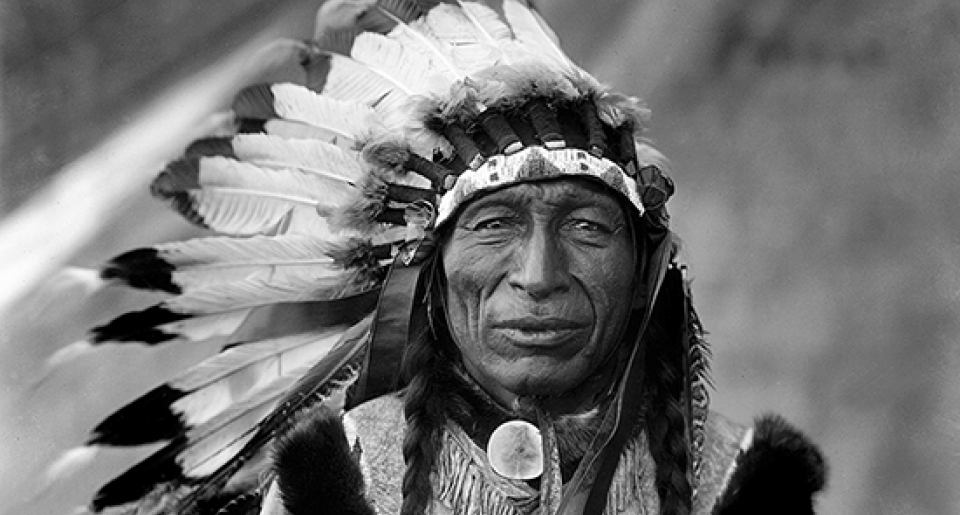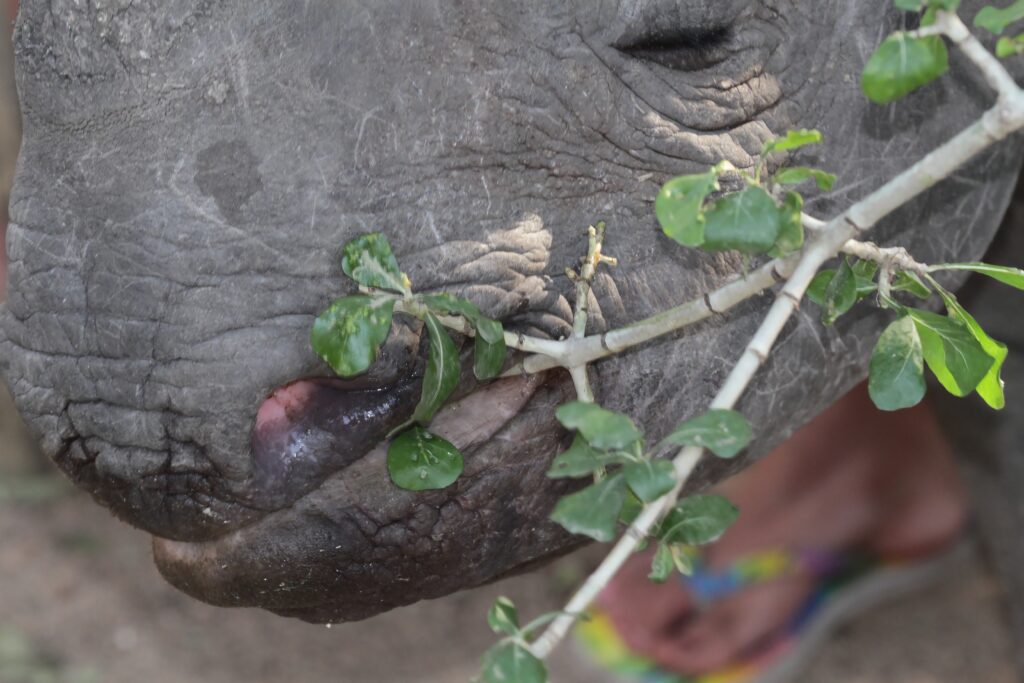Each profession has a set of fundamental goals. Doctors try to prevent sickness and heal people, engineers design and build, policemen protect people and apply the law, and pilots keep aircraft in the sky and try their best to land them safely.
The fundamental goal of conservationists is to preserve and protect habitat. All ecosystems are built on two main building blocks – habitat (soils and vegetation) and climate. There is little – other than have some control over carbon emissions – that we can do to manage and manipulate climate, but we can exert and have a significant effect on habitat. That should be our priority seeing that everything else hinges on it. People readily fund and support projects to save the endangered … whatever but we have lost the plot. Species are endangered because spaces are endangered. Endangered species are the symptom – the disease is loss of habitat.
It is pointless trying to save an animal species if there is no habitat for it.
We, as conservationists I am ashamed to say, do not practice what we preach about protecting and preserving habitat. There are four and only four reasons for this:
- We have never been taught or have been misinformed as to what the main aim of conservation is.
- We have forgotten what our fundamental goal should be and have become sidetracked with other issues.
- We are afraid of challenging the establishment and the current status quo.
- We find ourselves in a comfort zone – have a steady job, reasonable salary, medical aid, and pension fund and we do not want to jeopardize our situation by confronting what we know (or should know) to be wrong.
We could not care less.
Every professional conservationist could group him or herself into one of these four categories.
Undeveloped habitat should be considered as the most scarce and fast-diminishing resource on the planet. Unfortunately, areas designated as “protected” (national parks, provincial reserves, etc.) are targeted – often by the very custodians and guardians who should be protecting them – for development. The development is usually associated with large-scale eco-tourism like the building of lodges, rest camps, roads, and all the amenities and infrastructure considered necessary to provide the services expected by eco-tourists.
It is time to expose the myth that large-scale eco-tourism, especially when vehicle-dependent activities are utilized, is not consumptive. The reality is that it is one of the most consumptive forms of resource utilization because it fragments, divides, and destroys habitat.
As wildlife managers, we are often given reasonably undeveloped wild habitats to begin with. Unfortunately, habitat-impacting development soon follows, negating the very goal we set out to achieve in the first place – the preservation of habitat.

Developing protected areas cannot be considered progress it is regressive. Cancer is a terrible disease. It attacks a single cell to begin with. It then spreads to tissues and organs. Finally, systems collapse and the person dies an uncomfortable and oft agonizing death. The analogy is appropriate to developing unspoiled wildland habitat for this is nothing more or less than environmental cancer. Once begun it is unstoppable, and relentless and will eventually kill and destroy the system and that is why I am appalled at the way our conservation areas are continually subjected to unsuitable forms of eco-tourism that require significant material infrastructure to support it.
I wish to cite a current development as an example of what happens everywhere even in our national parks.
There is a reserve bordering on the Kruger National Park which used to be a provincial reserve but has now been handed back to a community. The first thing the community now thinks of is not the preservation of habitat but how they can make money from the reserve. This is understandable; it is a poor community with a high rate of unemployment.
But now, waiting in the wings are the environmental opportunists like hyaena with their business suits and attaché cases containing contracts that will ensure that they enrich themselves at the expense of the environment, waiting to exploit the situation.
It has now been decided that no less than four new luxury lodges with a total of 120 beds are to be built on the relatively small reserve. This is in itself an excessive overkill. After a bit of investigating I discovered that the community is offered R7 million rand for the exclusive rights to the reserve – this is how the environmental entrepreneurs market their product to the rich and famous.
It sounded reasonable at first glance until I dug a little deeper and discovered that it is not R7 million per annum but for a period of no less than 45 years! A quick bit of arithmetic shows that this equates to no more than about R155 000 per year which is to use a rather common term “peanuts”. Even if the community receives additional money from a percentage of gate entry fees that pushes their annual income up by an extra few hundred thousand rands it is still a pittance.
This is exploitation of the first order – a new form of colonialism where the naivety of rural people is taken advantage of. It reminds me of a story in the Bible where a young man sold his birthright for a bowl of lentils. The other significant fact is that the resources of the reserve are effectively locked away from the community for a whole generation.
Perhaps the saddest aspect of all will be that the developers will descend on what is a relatively undeveloped piece of wild habitat and will carve it up and fragment it, putting in new infrastructure, camps, roads, and all the paraphernalia that goes hand in hand with open vehicle game viewing activities.
Let it not be said that these activities are not non-consumptive forms of utilization because they consume the very thing that we should as a priority be protecting, namely habitat. It is a very high-impact form of utilization. And so the cancer spreads.
Of course, they will conduct their Environmental Impact Assessments. But let it be understood that the decision has already been taken to go ahead. The EIA’s are nothing more than a smokescreen for “business as usual”.
Habitat fragmentation is one of the greatest threats to biodiversity worldwide and is considered to have two components:
- Decrease in habitat type or all natural habitats in a landscape.
- Subdividing the remaining habitat into smaller, more isolated pieces.
Roads are increasingly being identified as a severe threat to sensitive wildlife and natural ecosystems. Roads block the movement of small and some large species of animals, isolate populations into smaller demographic units and expose large mammals to poaching and harassment.
Road kills of resident wildlife are a problem. In some areas, it accounts for the most deaths in medium and large-sized mammals not to mention plants and smaller animals that are often killed by off-road game viewing excursions.
Erosion from roads can lead to siltation of streams and rivers. Possibly the greatest threat from roads is that it encourages further development which leads to more habitat loss. Many species of invasive plants colonize disturbed roadside habitats and can spread and displace native flora.
Roads also require extensive maintenance and this results in huge quantities of sand being taken out of riverbeds or the establishment of borrow pits which leads to their own set of environmental impacts. The habitat taken up by eco-tourism road infrastructure in one of our largest national parks is more than 60,000 hectares. That means 60,000 hectares of habitat have been lost in addition to the other negative effects caused by road construction and maintenance.
Road construction and use apart from the physical barrier it creates may have a number of additional negative effects. A decision to build a new or upgrade an existing road should be carefully considered and the need for critical assessment is especially strong where the habitat of threatened or endangered species is involved. In many such instances, there is a strong case for preventing new roads from being built and it may also be advisable to close and rehabilitate existing roads.
There is an alternative to this high-impact type of eco-tourism which could generate far more income for the community per annum, allow them access to resources, and which has a far smaller environmental impact allowing habitat preservation to be a viable proposition. What it amounts to is a way of generating high per capita income for the least amount of environmental impact (i.e. preservation of habitat). The alternative is hunting. This reserve bordering on the Kruger National Park (KNP) has a substantial resident game population but in addition to this has a lot of spillover of animals (including the “Big 5”) from the KNP. It is ideally suited to offer real African hunting safaris. All that would be required to accommodate hunters would be one or two small tented safari camps. No additional infrastructure, no additional roads, etc. The tented camps could be completely portable – leaving no footprint and having a virtually negligible impact on habitat.
The community could, very conservatively speaking, easily generate 3- 4 million rand per annum from controlled safari hunting. This may not sound as much as the R7 million being offered by the environmental entrepreneurs to begin with but compare what they offer to what the community could earn over a period of 45 years from hunting. R135 – R180 million as opposed to the pittance being offered them of R7 million?
The surrounding community could also benefit from the meat and other wildlife products generated by the hunting. They would be able to enjoy the tangible benefits of natural resources instead of being denied access to them for more than four decades. Money is and always will be an issue but when it comes to conservation it is not the essence. Preservation of habitat is the priority; not developing tourism and other habitat-destroying and fragmenting infrastructure – especially those areas specifically set aside as “protected”.
Another stark reality of Africa is that the masses will no longer tolerate natural resources being locked away behind game fences exclusively set aside for the use of high-end market eco-tourists to drive around in, viewing wild animals from open game drive vehicles. It is time for us to catch a wake-up call.
Of course, the animal rights groups would have a lot to say about the “consumptive” utilization of wild animals from hunting. But they are in fact a non-entity. One never hears them say anything about habitat destruction and development of natural wildlands and so their bleatings and opinions are pointless and meaningless; it is not that they, like so many people who lay claim to being conservationists have also lost the plot, they have never known what it was to begin with!
When will we wake up? One day we might discover that it is too late. When the cancer has spread too far and, ecosystems founded on climate and habitat crash.
Perhaps only then will we understand what the supposed writer of a letter to George Washington, a native “Red Indian”, meant when he penned the following:
“We know that the white man doesn’t understand our ways. One portion of the land is the same to him as the next, for he is a stranger who comes in the night and takes from the Earth whatever he wants. The Earth is not his brother but his enemy, and when he conquers it he moves on.
He kidnaps the Earth from his children. His appetite will devour the Earth and leave behind a wasteland. The sight of your cities pains the eye of the red man. There is no quiet place in the white man’s cities.
No place to hear the leaves of spring or the rustle of insects’ wings. The clatter insults the ears. What is there to life if a man cannot hear the lovely cry of the whippoorwill or the argument of the frogs around a pond at night?
The Indian prefers the soft sound of the wind darting over the face of the pond, and the wind itself cleansed by the midday rain or scented with pinion. The air is precious to the red man for all things share the same breath: the beasts, the trees, the man. The white man doesn’t seem to notice the air he breathes. Like a man dying for days, he is numb to his own stench.
I am a savage and do not understand how the smoking iron horse can be more important than the buffalo whom we kill only to live.
All things are connected. Whatever befalls the Earth befalls the sons of the Earth.

When the buffalo are all slaughtered, the wild horses are all tamed. The secret corners of the forest heavy with the scent of many men, and the view of the ripe hills blotted by telegraph wires.
Where is the thicket? Gone.
Where is the eagle? Gone.
And what is it to say goodbye to the swift and the hunt, the end of living and the beginning of survival?
Continue to contaminate your own bed and you will one night suffocate in your own waste.”
(Letter from Chief Seattle to the American president George Washington.)
When we arrive at that place when all the earth’s wild habitat has been fragmented, developed, and destroyed and we are “suffocating in our own waste” – perhaps then and then only will we realize that we need habitat and that we cannot eat money.

